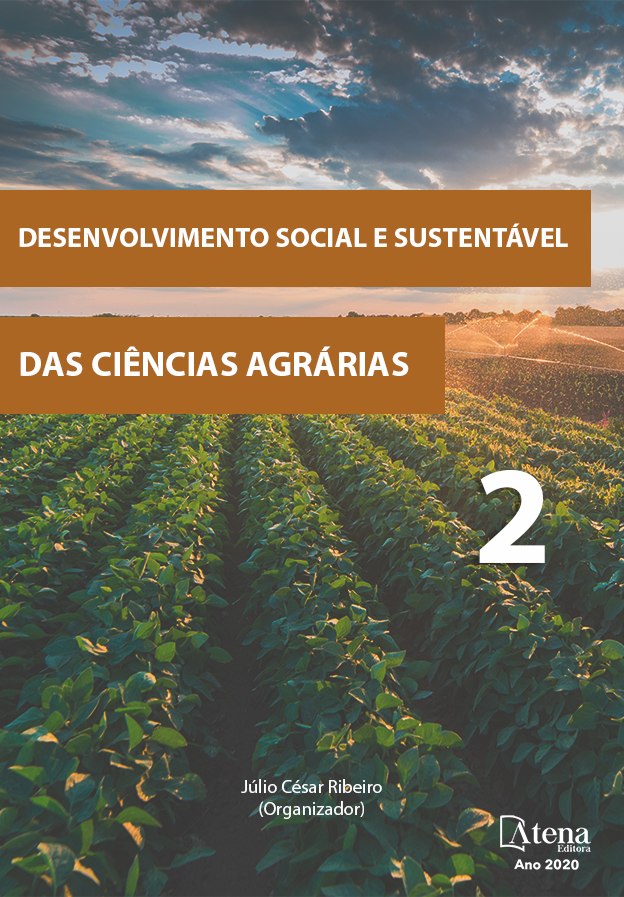
ÍNDICES DE VEGETAÇÃO DERIVADOS DE IMAGENS ORBITAIS COMO INDICADORES DE PRODUTIVIDADE DA CULTURA DA SOJA
O presente trabalho teve por objetivo explorar as relações existentes entre a produtividade e a resposta espectral da cultura da soja, utilizando o Índice de Vegetação por Diferença Normalizada (NDVI) como indicador, visando a utilização desta ferramenta na elaboração de estratégias de manejo do sistema produtivo da cultura da soja. Foram utilizadas imagens do satélite Landsat-8 com resolução espacial de 20 metros que foram processadas utilizando o software quantum GIS. As informações de NDVI extraidas das imagens orbitais passaram por análise de regressão com dados de produtividade da safra 2015/16 da Fazenda São Miguel, Município de Sorriso, Mato Grosso. O modelo de regressão que melhor descreveu a relação entre a produtividade e o NDVI máximo da cultura foi uma função polinomial de segunda ordem (R²= 0,37) sendo que o NDVI na faixa de 0,75 esteve relacionado as maiores produtividades observadas (65 sc.ha-1). Sendo o NDVI diretamente ligado à produção de biomassa vegetal, observa-se que tanto baixas quanto altas produções de biomassa impactam negativamente na produtividade da soja. Conclui-se que o NDVI é uma ferramenta potencial para o monitoramento da produtividade da cultura da soja bem como pode auxiliar na detecção de anomalias fisiológicas e potenciais limitadores de produção. No entanto recomenda-se que as observações ocorram entre diferentes safras, culturas e associados a outros dados como fertilidade do solo, dados climáticos e mapas de colheita por exemplo, dando destaque ao último citado.
ÍNDICES DE VEGETAÇÃO DERIVADOS DE IMAGENS ORBITAIS COMO INDICADORES DE PRODUTIVIDADE DA CULTURA DA SOJA
-
DOI: 10.22533/at.ed.71920091010
-
Palavras-chave: Geoprocessamento, Sensoriamento remoto, Monitoramento, Produção agrícola.
-
Keywords: Geoprocessing, Remote sensing, Monitoring, Agricultural production.
-
Abstract:
This work aimed to explore the relationships between crop yield and the spectral response of soybean, using the Normalized Difference Vegetation Index (NDVI) as an indicator, for the use of this tool in the management strategies development of the soybean production system. Images from the Landsat-8 satellite with a spatial resolution of 20 meters were used, processed using the quantum GIS software. NDVI information extracted from orbital images was submitted to regression analysis with yield data for the season 2015/16 of Fazenda São Miguel, Sorriso, Mato Grosso state, Brazil. The regression model that best described the relationship between the maximum NDVI and crop yield was a second order polynomial function (R² = 0.37) and the NDVI centered at 0.75 was related to the highest observed productivity (65 bu.ac-1). Since NDVI is directly linked to the biomass production, it was observed that both low as high biomass production have a negative impact on soybean yield. We conclude that NDVI is a potential tool for monitoring the soybean productivity as well as helping to detect physiological anomalies and potential yield gaps. However, it is recommended that the observations occur between different crop seasons, species and associated with other data such as soil fertility, climatic data and harvest maps for example, highlighting the last mentioned.
-
Número de páginas: 14
- Juliano Araujo Martins
- Laerte Gustavo Pivetta
- Renan Gonçalves de Oliveira
- Dácio Olibone
- Vanessa do Amaral Romansini


